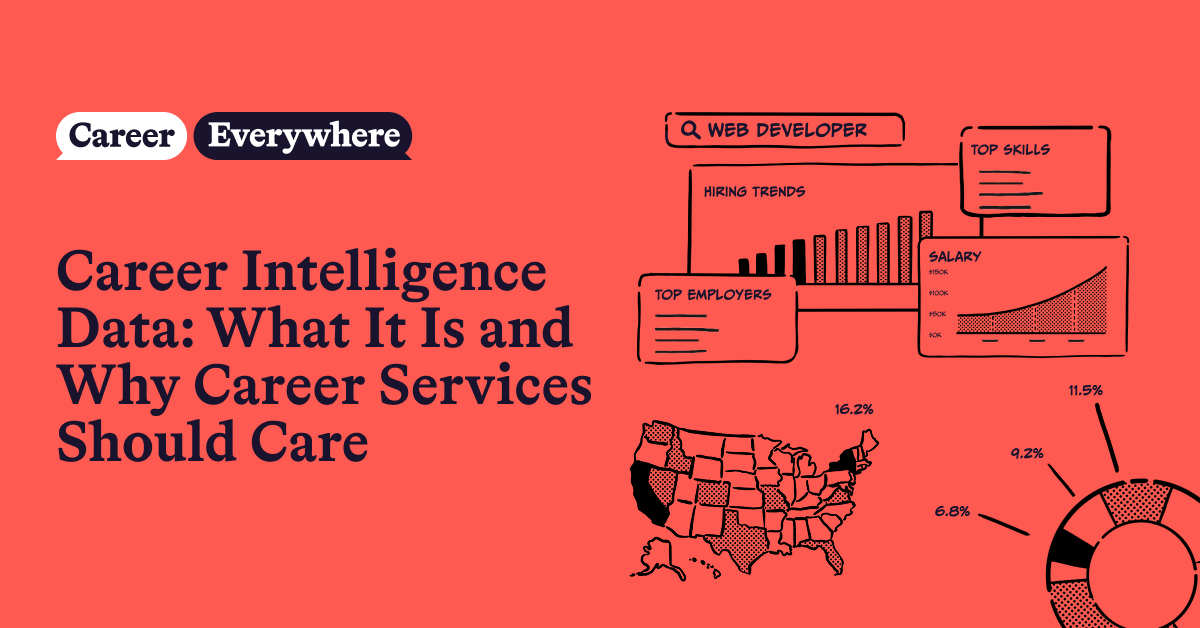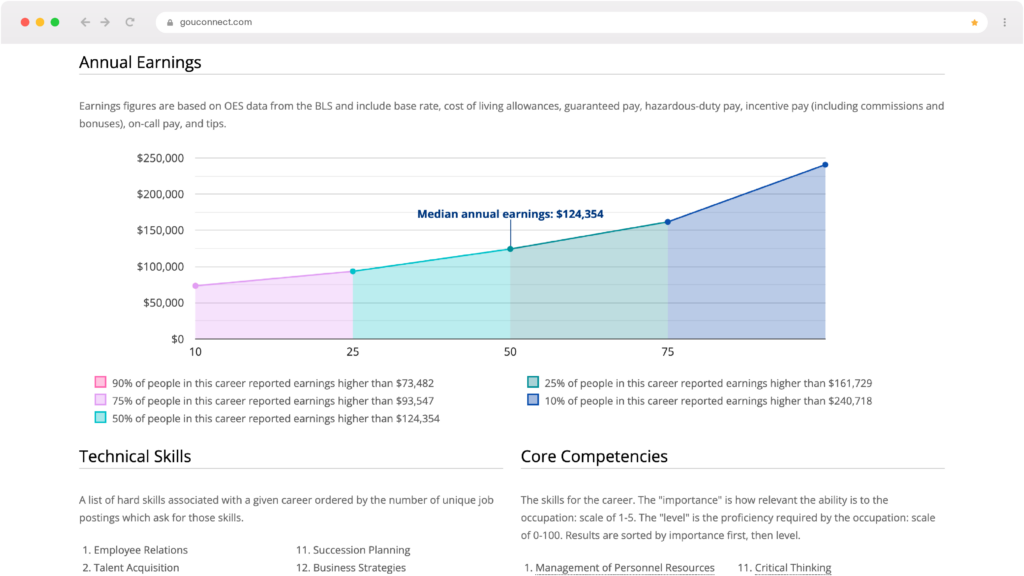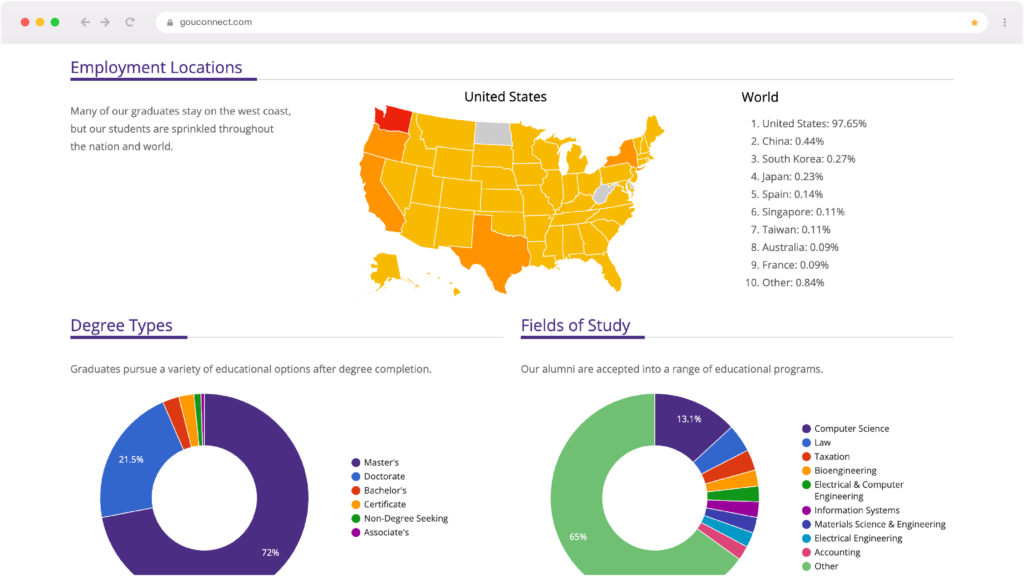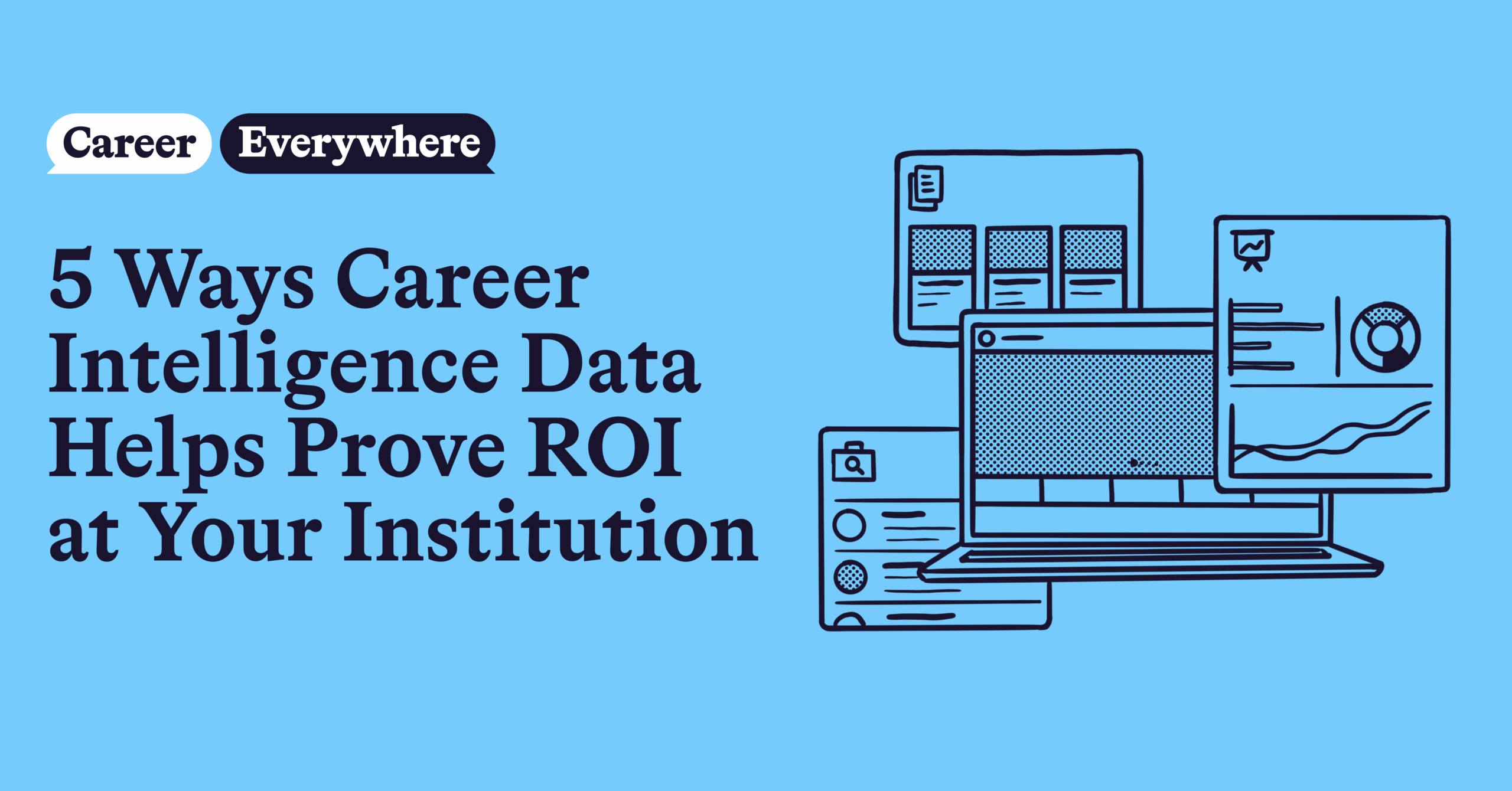
Colleges and universities are under pressure. Enrollment declines, shifting state and federal funding policies, and rising demand for transparency are forcing institutions to rethink how they demonstrate value. Leadership is being asked to prove ROI—not just in mission, but in measurable outcomes.
And they’re not alone. Students and families aren’t just asking if a degree is worth it. They’re asking how it pays off. Will it lead to a good job? In a field that’s hiring? With decent pay and room to grow?
Career services teams are in a unique position to help the entire institution address these questions and meet the moment in higher education by making sure Career Intelligence Data is accessible to everyone who needs it.
So, what is Career Intelligence Data?
At its core, Career Intelligence Data is the strategic combination of two powerful types of insight:
1. Labor Market DATA
This is your forward-looking view. It tracks hiring trends, in-demand skills, salary benchmarks, and where the job market is headed.

2. Outcomes Data
This is the look back. It shows where your graduates actually landed—what jobs they took, where they’re working, how much they’re making, and what industries they’ve entered.

Put them together, and you get a full-spectrum view of career success—what’s possible, and what’s been proven.
Why it matters now more than ever
For years, Career Intelligence Data has lived in silos: buried in spreadsheets, hidden behind paywalls, or siloed within a single office. But that’s changing and it needs to.
Why? Because access to this data is no longer a nice-to-have. It’s a competitive necessity.
Making Career Intelligence Data visible and actionable can:
- Help prospective students see a real, tangible path from classroom to career
- Guide undecided students toward degrees with strong career potential
- Fuel better academic advising and program selection
- Equip students to negotiate salaries with confidence
- Drive smarter decisions around program investments and partnerships
And when career teams lead the charge in bringing this data to life? They go from being a “nice resource” to a strategic powerhouse, driving enrollment, retention, student success, and institutional sustainability.
From insight to impact: who benefits?
Career Intelligence Data isn’t just for career services. It’s fuel for:
- Admissions and marketing teams, who need proof points for value
- Faculty and academic advisors, who want to align programs with market trends
- Employers, who are eager to recruit the right talent
- Students, who are hungry for clarity, confidence, and control over their futures
- Leadership, who need data-driven justification for strategic moves
Collecting data is only half the battle. Institutions that actively embed Career Intelligence Data across the campus ecosystem are gaining a competitive edge and positioning themselves for long-term relevance and sustainability.
How uConnect can help
Career Intelligence Data brings together two powerful data sets: forward-looking labor market insights and backward-looking student outcomes. At uConnect, we make it easy for career teams to embed both across the campus ecosystem through our Labor Market Insights module and Outcomes Data Visualization module. These tools help students, faculty, and staff access critical information about workforce demand, alumni success, and career pathways—anytime, anywhere.
Want to dive deeper? Download the full guide to learn how to bring Career Intelligence Data to life at your institution.


